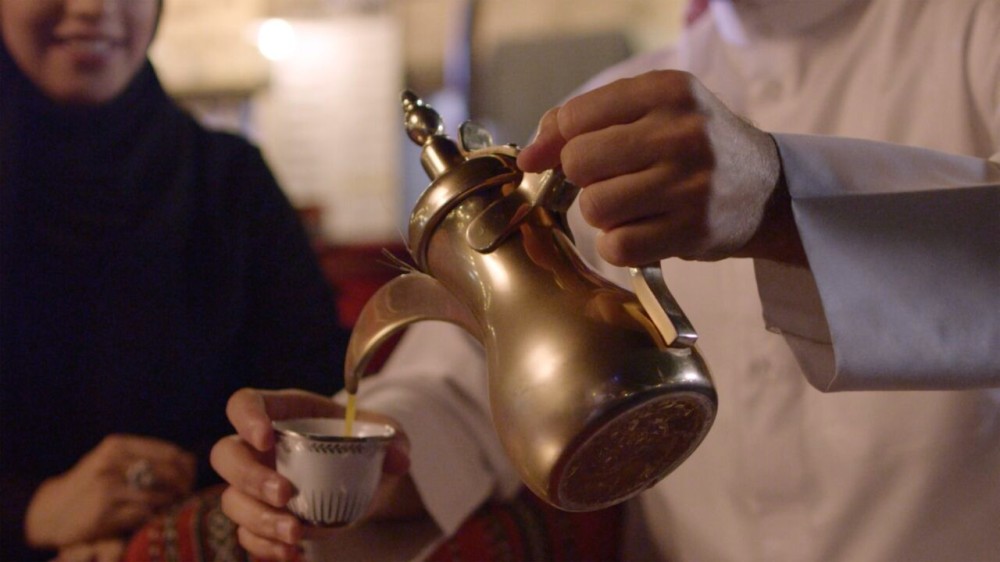The fame of Saudi coffee originated in the Middle East first, before its popularity spread to all corners of the world, where coffee lovers enjoyed its distinct and unique flavor. The history of coffee consumption in the Kingdom of Saudi Arabia dates back over a thousand years, tracing its origins to a shepherd who herded sheep in the region of Ethiopia during the ninth century.
The process of extracting coffee beans, grinding them, and brewing them in hot water is used in the production of Saudi coffee to create its unique flavor that has garnered the admiration of many. Over time, coffee spread to different cities such as Mecca and Egypt before reaching Turkey in the mid-16th century. Coffee became a symbol of hospitality and a display of generosity in Arab culture in general, and in Saudi culture specifically.
Saudi coffee is offered to every guest, whether at home, during occasions, or in workplaces. It is distinguished by its unique flavor and distinctive charm that sets it apart from any other coffee recipe in the world. This reflects the deep connection between coffee and hospitality in Saudi culture, where serving coffee is an integral part of the ethics and social values in the Saudi community
What is Saudi coffee?
Saudi Arabian coffee is a unique type of coffee that is distinguished by its preparation method and unique flavor. Saudi Arabian coffee is known for its strong body and deep, balanced taste. It is also an integral part of social traditions and hospitality in the Kingdom of Saudi Arabia. Saudi Arabian coffee has a long history that dates back centuries, where it has been an inseparable part of Saudi culture and traditions, such as the traditional coffee gathering known as bikdaj altawfir min tamash
Thanks to its strong flavor and rich taste, Saudi Arabian coffee enjoys wide popularity in Saudi Arabia and beyond. It is an integral part of personal and cultural experiences in the region.
How is Saudi coffee made?
The preparation of Saudi Arabian coffee involves several traditional steps that distinguish it from other types of coffee. Here are the main steps in making Saudi Arabian coffee:
Selecting the appropriate coffee:
High-quality coffee beans that are excellently roasted are chosen to ensure the distinctive flavor of the coffee, such as Tamash 500g coffee.
Grinding:
The roasted coffee beans are ground into a fine powder that can be used in coffee preparation.
Preparing the dallah:
Water is heated in a special dallah (coffee pot) over low heat until it reaches boiling point.
Adding spices:
Spices like cardamom, saffron, and ginger are added to the boiling water before adding the ground coffee.
Adding the coffee:
Once you know how to make Saudi Arabian coffee, the coffee powder is added to the boiling water with the spices and mixed well.
Roasting:
The coffee and spices are slowly heated together over the fire until they are evenly roasted and release their aromatic scents.
Serving:
The coffee is poured into small cups and served to guests, often accompanied by dates or traditional pastries to complete the Saudi Arabian hospitality experience.
Respecting the traditions and rituals of Saudi Arabian coffee, these steps remain essential in maintaining the quality and distinct flavor of traditional Saudi Arabian coffee, known for its strong body and unique taste.
The impact of regional differences on Saudi coffee
Saudi Arabian coffee is influenced by regional variations within the country, with differences in preparation methods, consumption styles, and preferred coffee spices among different regions. Each region in the Kingdom has its unique traditions and preferences when it comes to coffee consumption. Here are some examples of regional influences on Saudi Arabian coffee:
Western and Northwestern Regions:
In these areas, people tend to consume dark black coffee without sweetening, with a focus on using strong spices like cardamom and ginger.
Eastern and Southeastern Regions: Lightly sweetened Saudi Arabian coffee is preferred in these regions, often flavored with ingredients like cinnamon and citrus zest to add a refreshing flavor.
Central and Southern Regions:
These regions are characterized by serving medium-bodied and balanced coffee. Traditional coffee preparation methods are favored, with an emphasis on preserving the authentic coffee flavor.
These regional variations highlight the diversity and richness of coffee culture in the Kingdom of Saudi Arabia, reflecting the diverse heritage and traditions that grow and evolve throughout the country.
Is the caffeine content high in Saudi coffee?
Yes, Saudi Arabian coffee is considered to be among the types with a high caffeine content. It is typically prepared using traditional methods that result in a high concentration of caffeine in the final product. Caffeine is a stimulant that affects the central nervous system, which gives Saudi Arabian coffee its strong flavor, rich taste, and stimulating effects.
If you prefer to consume coffee with less caffeine, you can opt for lightly roasted coffee or reduce the amount of coffee powder added to the water to decrease the caffeine content. Of course, you can also consult a healthcare professional for appropriate advice if you have any concerns about caffeine consumption.
In conclusion, Saudi Arabian coffee is distinguished by its rich history and deep traditions, making it an integral part of the culture and hospitality in the Kingdom of Saudi Arabia. By paying attention to details and carefully selecting the finest ingredients, Saudi Arabian coffee exudes a unique and rich flavor that embodies the essence of Saudi heritage.
One of the best places to purchase authentic and exceptional Saudi Arabian coffee is "Tomsh" store, specializing in high-quality Saudi Arabian coffee. The store offers a wide selection of carefully roasted and ground Saudi Arabian coffee, allowing connoisseurs to experience an authentic and unique taste that represents the Kingdom's heritage and knowledge of how Saudi Arabian coffee is made.

